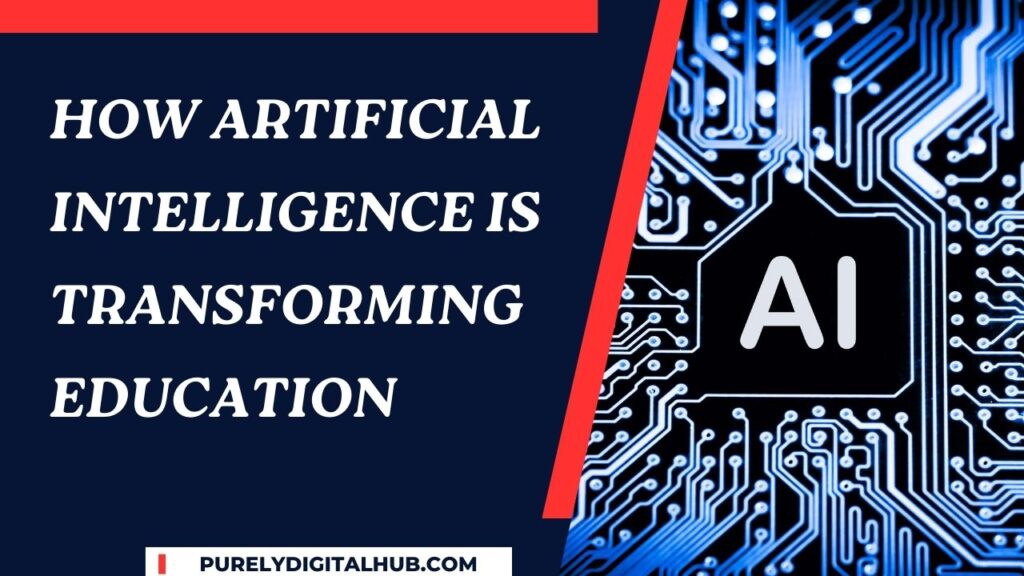Artificial Intelligence (AI) is revolutionizing various industries, and education is no exception. By leveraging AI, educational institutions and educators can create more personalized, efficient, and effective learning experiences. From adaptive learning platforms to AI-powered administrative tools, the impact of AI in education is profound. This guide explores how AI is transforming education and its implications for students, teachers, and institutions.
1. Personalized Learning for Every Student
One of AI’s most significant contributions to education is personalized learning. AI systems analyze student performance and learning styles to deliver tailored content and support. Key features include:
- Adaptive Learning Platforms: Tools like DreamBox and Khan Academy adjust lessons based on student progress.
- Customized Feedback: AI provides instant feedback on assignments, highlighting areas for improvement. Mentorship programs can further assist learners by offering personalized guidance, helping them grow and refine their skills.
- Individualized Learning Paths: AI recommends resources and activities suited to each student’s needs.
| Benefit | Impact on Students |
|---|---|
| Adaptive Lessons | Keeps students engaged and challenged |
| Instant Feedback | Accelerates learning |
| Individualized Resources | Addresses specific weaknesses |
2. Streamlining Administrative Tasks
AI-powered tools help educators and administrators automate repetitive tasks, saving time and resources. Examples include:
- Grading Automation: Tools like Gradescope speed up grading processes.
- Attendance Tracking: AI systems use facial recognition or digital tools to track attendance.
- Resource Management: AI helps optimize schedules, room assignments, and resource allocation.
By reducing administrative burdens, AI allows educators to focus more on teaching and student engagement.
3. Enhancing Accessibility in Education
AI makes education more inclusive by addressing the needs of diverse learners. Key applications include:
- Language Translation: Tools like Google Translate enable access to content in multiple languages.
- Speech Recognition: AI assists students with disabilities by converting speech to text.
- Assistive Technologies: AI-powered tools support visually and hearing-impaired learners.
| AI Tool | Accessibility Feature |
| Language Translation | Multilingual content access |
| Speech Recognition | Converts spoken words to text |
| Assistive Technologies | Enables learning for disabled students |
4. AI-Powered Tutoring Systems
Virtual tutors and chatbots provide students with 24/7 academic support. These tools offer:
- Instant Help: Address questions or problems outside classroom hours.
- Subject-Specific Guidance: Specialized tools for math, science, or language learning.
- Interactive Learning: Gamified elements to make learning engaging.
For instance, AI tutors like Squirrel AI have demonstrated success in improving student outcomes in complex subjects.
5. Data-Driven Insights for Teachers
AI analytics tools provide teachers with actionable insights to enhance their teaching strategies. Features include:
- Performance Dashboards: Highlight student strengths and weaknesses.
- Predictive Analytics: Identify students at risk of falling behind.
- Curriculum Optimization: Suggest improvements based on learning outcomes.
These insights empower educators to make informed decisions and tailor their instruction for better results.
6. Virtual Reality and AI for Immersive Learning
The combination of AI and Virtual Reality (VR) offers immersive educational experiences. Applications include:
- Virtual Field Trips: Explore historical sites or natural wonders without leaving the classroom.
- Simulations: Practice real-world scenarios, such as medical procedures or scientific experiments.
- Language Immersion: AI-powered VR environments simulate conversational practice.
7. Improving Student Engagement with AI
AI tools enhance student engagement through interactive and personalized content. Examples include:
- Gamification: AI incorporates game-like elements to make learning fun.
- Interactive Videos: Interactive Videos: AI generates quizzes and interactive elements within video lessons. Additionally, an educational video maker can be used to create dynamic and engaging video content, enhancing the learning experience.
- AI-Powered Study Aids: Tools like Quizlet use AI to create tailored study materials.
| Engagement Strategy | AI Application |
| Gamification | Makes learning enjoyable |
| Interactive Videos | Keeps students active during lessons |
| Study Aids | Personalizes study resources |
8. Bridging the Gap in Remote Learning
AI addresses challenges in remote education by offering:
- Automated Assessments: Efficiently grade and track student performance.
- Virtual Classrooms: AI enhances video conferencing platforms with features like real-time transcription.
- Engagement Tracking: Analyze student participation and identify areas for intervention.
9. Addressing Ethical and Practical Challenges
While AI offers immense potential, it also raises challenges, including:
- Privacy Concerns: Protecting sensitive student data.
- Bias in Algorithms: Ensuring AI tools are equitable and fair.
- Cost Barriers: Making AI solutions accessible to underfunded institutions.
Educational institutions must address these issues to ensure AI’s responsible and effective use.
Conclusion
Artificial Intelligence is transforming education by personalizing learning, streamlining administrative tasks, and enhancing accessibility. Its applications, from virtual tutors to immersive VR experiences, are reshaping the way students learn and teachers teach. However, to fully realize its potential, educators and policymakers must address ethical challenges and ensure equitable access. By leveraging AI effectively, the future of education promises to be more inclusive, engaging, and impactful.
